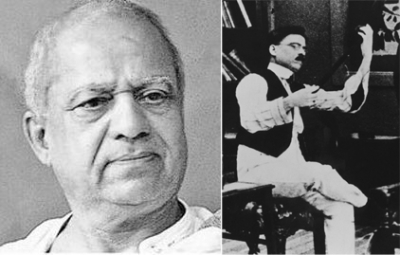By Akshay AcharyaMumbai, April 30 : Indian cinema today is the most prolific film industry in the world with a broad range of content from mainstream masala entertainers to meaningful cinema, to experimental films in diverse genres and different languages.
In its 110 years, it has seen several changes on various fronts.including the creative and the technological.
And everything that Indian cinema entails traces back to one man — Dadasaheb Phalke.
Phalke, who was born on this day 153 years ago, laid the foundation of Indian cinema with his first feature ‘Raja Harishchandra’ in 1913 after getting inspired by the French silent short film ‘The Life of Christ’, which presented the life of Jesus in 25 tableaux based on the canonical gospels.
Filmmaking, however, was not his career goal from the start.Phalke, who was born Dhundiraj Govind Phalke on April 30, 1870, to a Sanskrit scholar father and a homemaker mother, had two brothers and four sisters.
At the age of 15, he enrolled at Mumbai’s oldest art college — Sir J.J.School of Art.
He completed a year of the drawing course and at the beginning of 1886, he accompanied his elder brother, Shivrampant, to Baroda where he married a girl from a Maratha family.He lost his first wife and child to plague.
He later joined Kala Bhavan, the Faculty of Fine Arts, at the Maharaja Sayajirao University, Baroda, and completed a course in oil and watercolour painting in 1890.
He also achieved proficiency in architecture and modelling.The year 1890 was a defining year for him as he bought a camera and started experimenting with photography, processing, and printing.
He relocated from Godhra to Baroda after his photography business failed to take flight.In Baroda, he is said to have met a German illusionist named Carl Hertz, from whom he learnt some ‘magic’, which also involved a few techniques of trick photography, all skills which Phalke ultimately ended up using in his films.
Phalke did several jobs such as that of a draftsman for the Archaeological Survey of India and even had his own printing press — Laxmi Art Printing Works, where he collaborated with the great painter Raja Ravi Verma, whose work continues to inspire the likes of filmmaker Sanjay Leela Bhansali.
In early 1890, he married his second wife Saraswati and had a successful long marriage with her.Saraswati doubled as his collaborator.For ‘Raja Harishchandra’, she not only worked on the costume design and catering, but also sold off her valuables to ensure her husband’s dream became a reality.
She learnt the ropes of filmmaking from Dadasaheb and took the load off him in several departments.She developed the film’s reels, thereby becoming India’s first film editor, technician and financer, and also taught the mannerisms of women to male actors in the film because Indian society back then looked down upon women in the performing arts.
No woman, as a result, came forward to act in Phalke’s debut film resulting in male actors taking up female roles.The struggles of making ‘Raja Harishchandra’ have been narrated in the 2009 Marathi film ‘Harishchandrachi Factory’, which was the second Marathi movie to be selected to represent India in the competition for the Best Foreign Language Film at the Oscars.
‘Raja Harishchandra’ was released to widespread applause, thus laying the foundation of Indian cinema and bringing money to Phalke’s company.
The recently released streaming series ‘Jubilee’ tells the story of the Golden Age of Hindi cinema, delving into the evolution of Himanshu Rai and Devika Rani’s Bombay Talkies.
By the time of Bombay Talkies, Indian cinema had struck deep roots in the imagination of the people.But Dadasaheb Phalke made India’s first film in difficult times with limited resources and went on to roll out five more even as World War I was raging — three decades before Bombay Talkies was founded.
Today, Indian cinema is a global force to reckon with.The credit for it goes to the ground-breaking work of Dadasaheb Phalke, who along with his wife refused to be cowed by challenges and paved the way for the collaborative art form of filmmaking in India.
aa/pgh
#Dadasahebs #Mumbai #Devika #Himanshu Rai #Raja # Devika #Godhra #Mumbai







